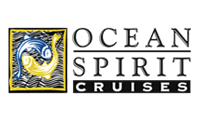You might also want to read:
Mother and calf humpback put on a show
22nd of August 2024
Humpback sighting hails whale season in the Tropical North
26th of June 2023
Turtley terrific by two - Danny and Portia back in the wild
7th of December 2023
Quicksilver Group wins Large Employer of the Year
17th of July 2024
Diving in to witness Coral Spawning on the Great Barrier Reef
13th of October 2023
Quicksilver invests in next generation renewable fuel engines
19th of March 2024

The first of the 4 ton engines being installed in Quicksilver V
Re-powering for a sustainable future...
Quicksilver V, one of the Quicksilver Group’s premier wavepiercing catamarans is currently undergoing a $2 million engine refit, destined to deliver a more sustainable future with reduced emissions and ready for renewable fuels.
The 39 metre Quicky 5 as she is affectionately known, is on the slipway at Austal Ships’ Cairns yard where two next generation Rolls Royce mtu series 2000 commercial marine engines, mtu BlueVision new generation Automation and new ZF marine gearboxes are being installed. In a collaboration with Quicksilver’s Engineering Team, Penske Australia, Austal and local marine contractors, the project also involves modifying the vessel’s engine beds to suit the new engines.
“It has been a lengthy planning process and the engines were custom ordered over 14 months ago. The installation was originally slated to begin in January, however TC Jasper had other plans and the subsequent road closure prevented our Port Douglas team from travelling to Cairns,” said Tony Baker, Quicksilver Group Managing Director.
The Rolls-Royce mtu 16V2000M72 commercial marine engines supplied by Penske Australia have received a clean fuel certification for HVO (Hydrotreated Vegetable Oil) and other EN15940 fuels (synthetically produced diesel fuels) which have demonstrated up to 90% CO2 emissions reduction.
“Operating in the World Heritage Great Barrier Reef Marine Park, we are acutely aware of our footprint. This is a significant investment and the advances in these fuel-efficient engines will ensure a more sustainable future as we continue to deliver the best practice that we strive for, further minimising emissions across our operations.”
Quicksilver has previously invested in retrofitting four Rolls-Royce mtu 16V2000M72 commercial marine engines into the company’s flagship 45 metre Quicksilver VIII.
“When the HVO fuel becomes commercially available in Australia, our fleet will be ready to lead the way with these environmentally-friendly, sustainable fuels. Replacing conventional diesel fuel can be transitioned without any adjustments to these engines.”
Travis Clarke, Quicksilver’s General Manager Operations said, “This refit is a huge undertaking and is being managed in-house by our skilled Engineering team. With the old engines removed via an opening cut into the aluminum hulls, the first of the new engines weighing approximately 4 ton, was craned into Quicksilver V today (19 March). The complete installations are expected to take 6 to 7 weeks.”
Following the engine refit, Quicksilver V is expected to be back at work in early April, touring to Agincourt Reef and showcasing the wonders of the Great Barrier Reef to visitors from around the globe.
This latest fleet investment follows the $2 million repowering of Great Adventures’ 30 metre Reef King touring vessel with new technology engines in early 2023.
About HVO fuel: Waste vegetable and animal fats and used vegetable oils can be used for HVO, which are converted into hydrocarbons by means of a catalytic reaction with the addition of hydrogen. Through this process, the fats and vegetable oils are adapted in their properties to diesel fuel and can supplement it as an admixture or replace it completely. The benefits of HVO are clean combustion with reductions in particulate emissions of up to 80%, nitrogen oxide emissions by an average of 8%, and CO2 emissions by up to 90% compared to fossil diesel.










